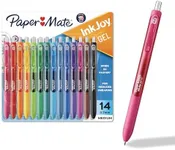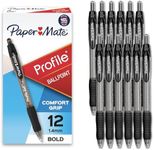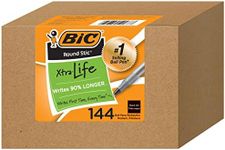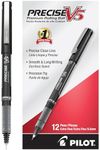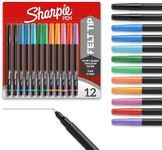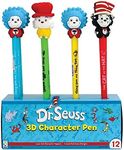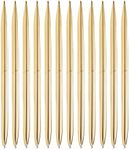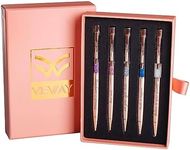Buying Guide for the Best Writing Pen
Choosing the right writing pen can significantly enhance your writing experience, whether you're jotting down notes, signing documents, or creating art. The perfect pen for you will depend on your specific needs and preferences. Here are some key specifications to consider when selecting a writing pen, along with explanations to help you make an informed decision.Ink TypeInk type determines how the pen writes and feels on paper. Common types include ballpoint, gel, rollerball, and fountain pen inks. Ballpoint pens use oil-based ink that dries quickly and is less likely to smudge, making them ideal for everyday use. Gel pens use water-based ink that provides vibrant colors and smooth writing but may smudge if not allowed to dry. Rollerball pens also use water-based ink, offering a smoother writing experience than ballpoints but with a higher risk of smudging. Fountain pens use liquid ink and offer a luxurious writing experience with varying line widths, but they require more maintenance. Choose the ink type based on your writing habits and the importance of smudge resistance.
Tip SizeTip size affects the thickness of the lines you produce. Common sizes range from extra fine (0.3mm) to broad (1.0mm or more). Extra fine tips are great for detailed work and small handwriting, while fine tips (0.5mm) are suitable for general writing. Medium tips (0.7mm) offer a balance between smoothness and line thickness, making them versatile for various tasks. Broad tips are ideal for bold writing and signatures. Consider your writing style and the level of detail you need when choosing the tip size.
Grip ComfortGrip comfort is crucial for extended writing sessions. Pens come with various grip designs, including rubberized, contoured, and ergonomic grips. Rubberized grips provide a soft, cushioned feel, reducing hand fatigue. Contoured grips are shaped to fit the natural curve of your fingers, offering better control. Ergonomic grips are designed to minimize strain and improve comfort, especially for those with arthritis or other hand issues. Test different grip styles to find the one that feels most comfortable for you.
RefillabilityRefillability refers to whether the pen can be refilled with new ink cartridges or if it is disposable. Refillable pens are more environmentally friendly and can be more cost-effective in the long run. They also allow you to switch ink colors and types easily. Disposable pens are convenient and require no maintenance, but they contribute to waste. Consider how often you use pens and your preference for sustainability when deciding between refillable and disposable options.
Build QualityBuild quality affects the pen's durability and overall feel. Pens can be made from plastic, metal, or a combination of materials. Plastic pens are lightweight and affordable but may feel less sturdy. Metal pens offer a premium feel and are more durable, making them suitable for professional settings. Some pens combine materials to balance weight and durability. Think about where and how you will use the pen to determine the build quality that best suits your needs.
Aesthetic DesignAesthetic design includes the pen's appearance, color, and style. While this may not affect functionality, a pen that you find visually appealing can enhance your writing experience. Pens come in various designs, from sleek and modern to classic and ornate. Choose a design that reflects your personal style and makes you feel good about using the pen.
